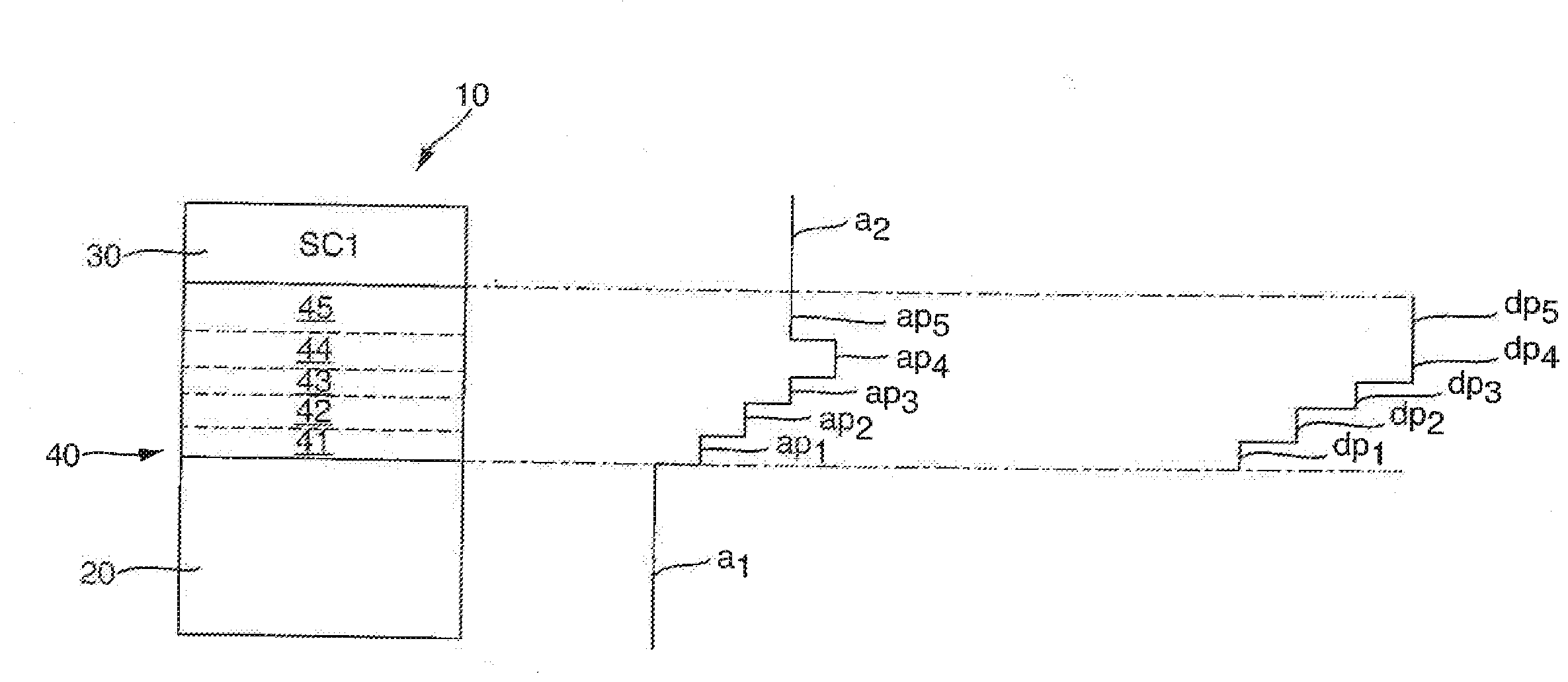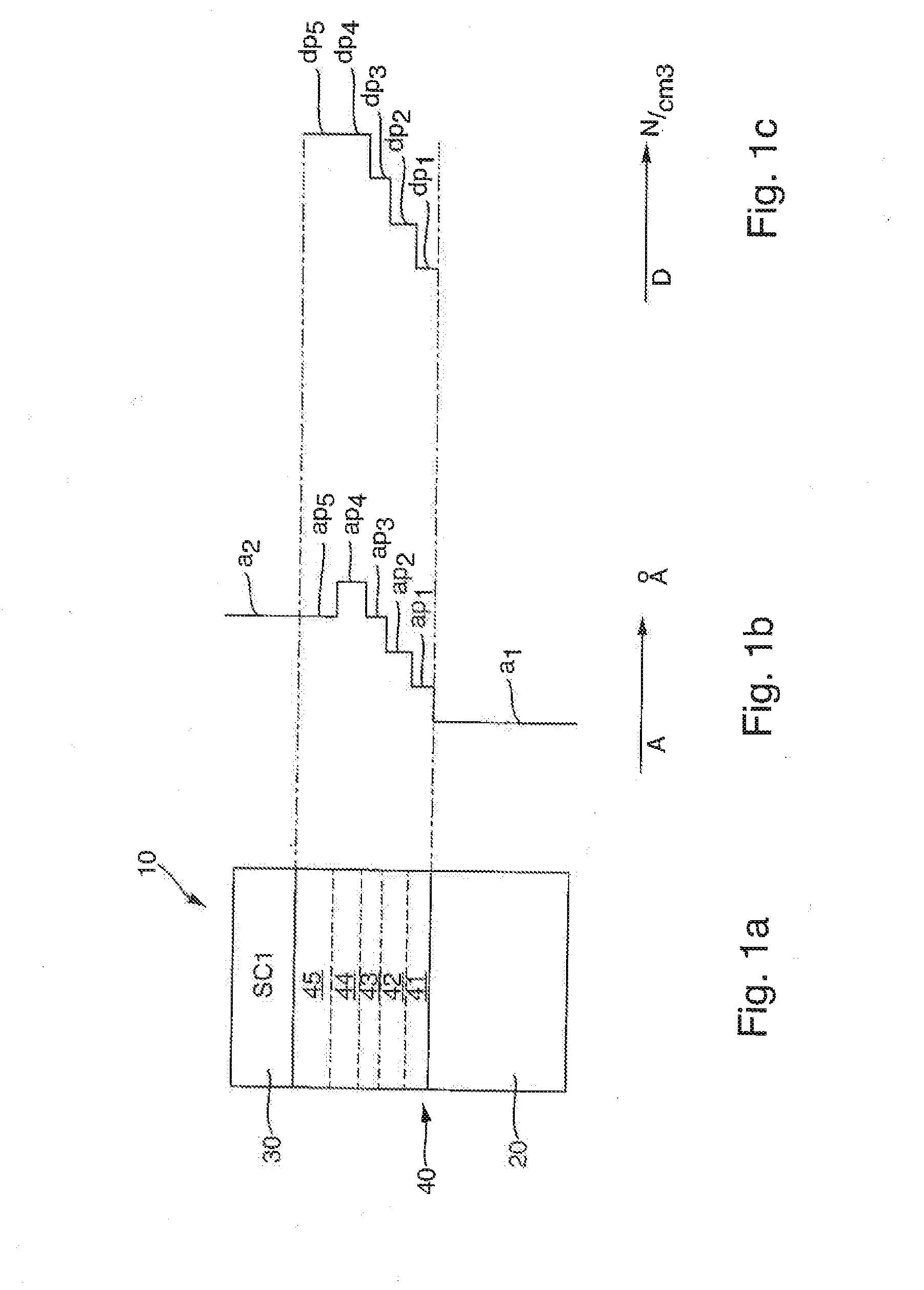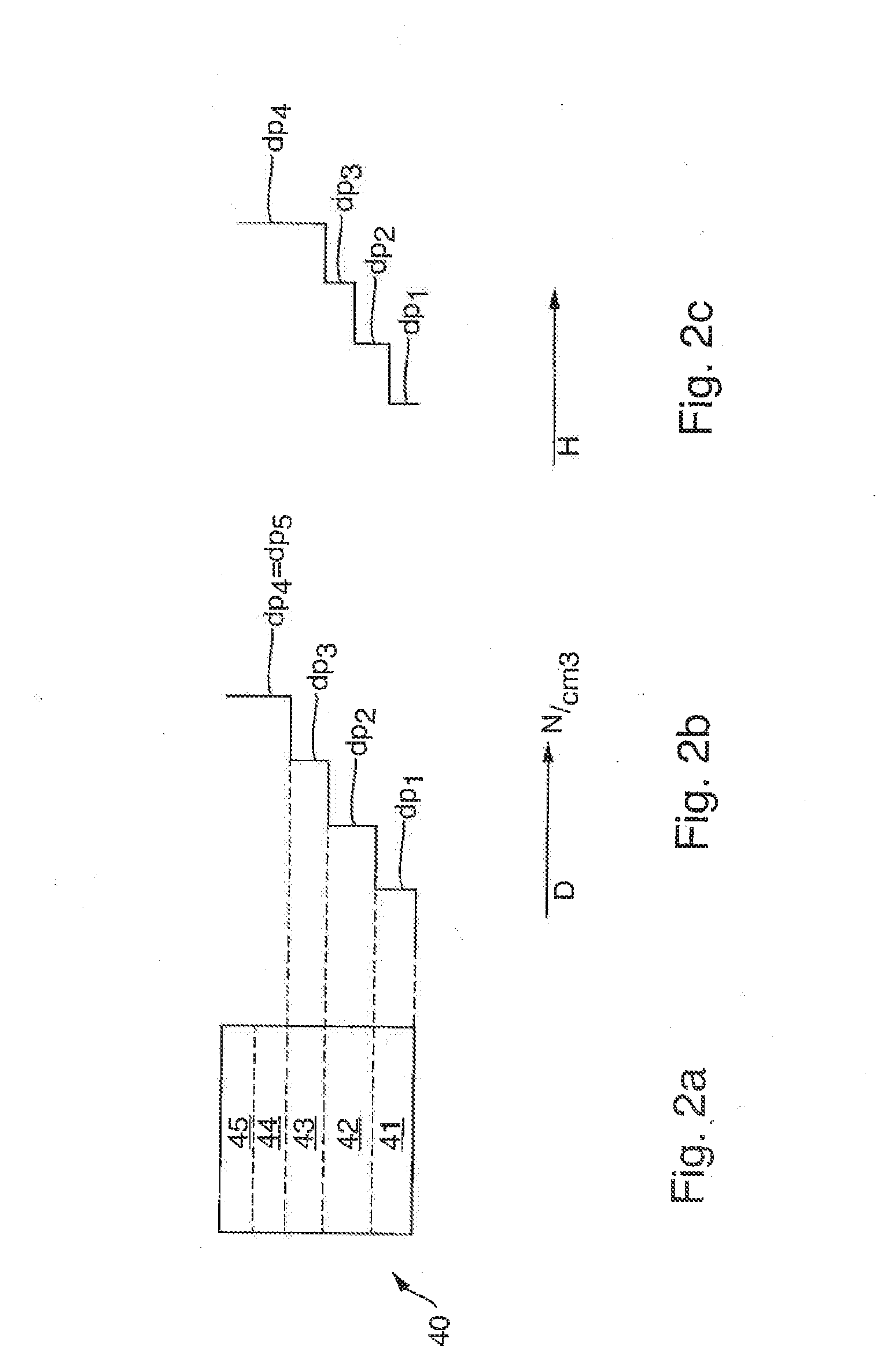Solar cell stack
a solar cell and stack technology, applied in the field of solar cell stacks, can solve problems such as insufficient efficiency
- Summary
- Abstract
- Description
- Claims
- Application Information
AI Technical Summary
Benefits of technology
Problems solved by technology
Method used
Image
Examples
Embodiment Construction
[0035]The illustration in FIG. 1 shows a solar cell stack 10, which comprises a first semiconductor solar cell 20 and a second semiconductor solar cell 30 and a metamorphic buffer 40 formed between semiconductor solar cell 20 and a second semiconductor solar cell 30.
[0036]First semiconductor solar cell 20 has a p-n junction made of a first material, which has a first lattice constant a1 and a first bandgap energy Eg1. Second semiconductor solar cell 30 has a p-n junction made of a second material, which has a second lattice constant a2 and a second bandgap energy Eg2. Second lattice constant a2 is bigger than first lattice constant al. The solar radiation enters through second semiconductor solar cell 30 and subsequently penetrates the buffer, after which it strikes first semiconductor solar cell 20. In one specific embodiment, which is not shown, the solar radiation enters through first semiconductor solar cell 20 and subsequently penetrates the buffer, after which it strikes secon...
PUM
 Login to View More
Login to View More Abstract
Description
Claims
Application Information
 Login to View More
Login to View More - R&D
- Intellectual Property
- Life Sciences
- Materials
- Tech Scout
- Unparalleled Data Quality
- Higher Quality Content
- 60% Fewer Hallucinations
Browse by: Latest US Patents, China's latest patents, Technical Efficacy Thesaurus, Application Domain, Technology Topic, Popular Technical Reports.
© 2025 PatSnap. All rights reserved.Legal|Privacy policy|Modern Slavery Act Transparency Statement|Sitemap|About US| Contact US: help@patsnap.com



